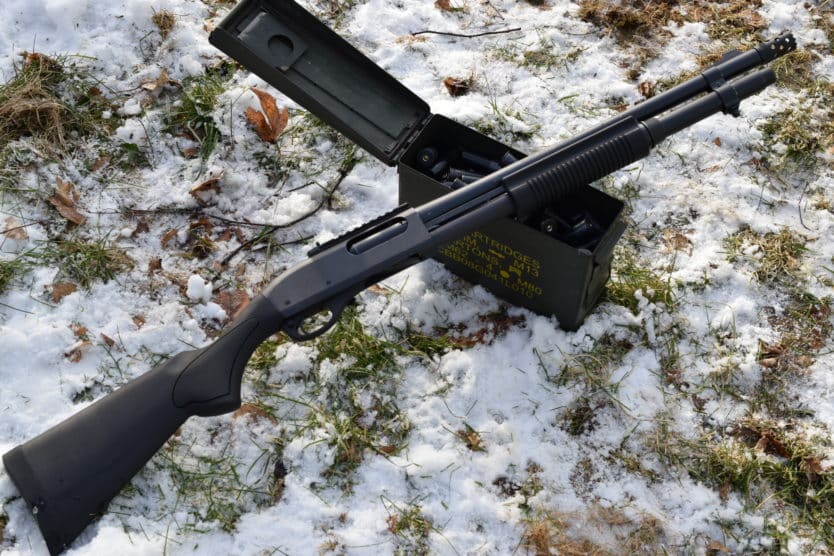The shotgun is a very common household firearm and has been for centuries. The gun everyone thinks about, probably even before they think of a pistol or an AR-style rifle, is a shotgun.
The shotgun is the only gun today that you can do almost anything with. You have loads for hunting anything from tiny mice, to Grizzly Bear. Then you have a variety of options from riot control bean bag rounds to buckshot and slugs. Every one of these options has variations of its own from manufacturers to size and weight.
There is no doubt that the shotgun still maintains itself as having the greatest versatility out of any other design on the market. But the one thing that will probably always limit it is the range factor.
The shotgun, with all its versatility, is and forever maybe a sub-100 Yard gun. But in this range, I still feel that the shotgun dominates easily in versatility and effectiveness. For this reason, I feel that the “combat shotgun” is a very real and relevant consideration.
All Shotgun Deals in ONE Click! Up to 20% OFF! Guns.com
The Combat Shotgun: Everything You Need to Know
In general, there are a few things that you need to consider when selecting a shotgun to serve as a combat shotgun. My experience with using shotguns has taught me a few things about what you may want to look for in one. Now just keep in mind that I have a very stern set of requirements for my combat shotgun. I need it to be capable of abuse, and that limits it to being basic in some aspects. Also, due to my experience, I don’t waste priorities on passive issues, which you may notice along the way.
Combat Shotgun Size
A combat shotgun needs to be an appropriate size to where it can be used just as easily as a rifle in close quarters. I would say that the standard 18″ barrel on the Mossberg 500/590 and Remington 870 are just fine examples of this. Currently the shotgun has been added to the list of available bullpups on the market with the Keltec KSG, and the DP-12. This is allowing the shotguns to maintain an 18″ barrel length and still be just long enough to not need a tax stamp for having a short-barreled shotgun.
This is a great answer to people wanting short barreled guns without the need for a tax stamp, but they are not without downsides of their own. But you will need to decide what size the shotgun needs to be in order to best serve you.
Capacity
The shotgun is one of those guns that have just as much variety in capacity and feeding sources as it does with loading options. With the traditional tube magazine, and adhering to the previously mentioned barrel lengths, it is common to find shotguns holding between 6 and 8 rounds, depending on whether you are using 2-3/4″ or 3″ loads.
There are some designs like the Saiga 12 that can feed on a box magazine or even a drum with varying capacities. But be aware that convenience is not without consequence in this setting. These types of shotguns will be picky on what kind of ammo they will reliably function with. That said, if you can deal with this condition, you have that many more options to choose from.
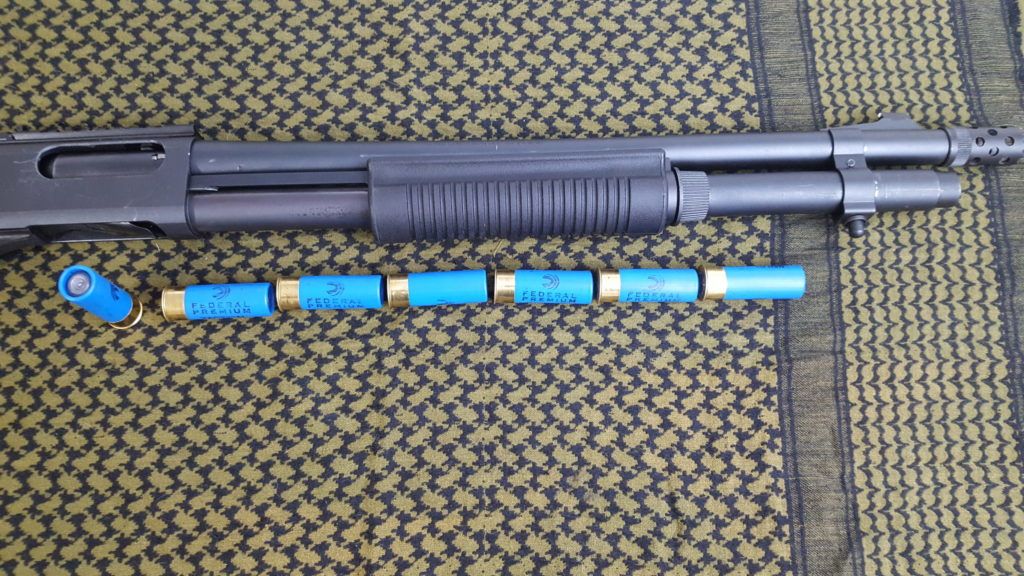
Action
One of the critical parts of the combat shotgun is the type of action it uses. This is because the reliability of the action will determine its’ suitability in being defined as worthy for combat. In general, it is very well known that pump action is a very reliable system, with little objection. Now, I am not going to smear semi-auto shotguns, but I will impart a little bit of my experience.
When I was deployed, we were issued the Benelli M4, Mossberg 500, and the Remington 870. The Benelli always choked on breaching loads, and even full powered buckshot loads at times. Basically, we just ended up treating the Benelli like an overly complicated pump/bolt-action shotgun. We didn’t get to say “no thank you” to our command, so we had to make due. Not fun at all.
In that case, I learned that it is best to stick with a system that is versatile and works every time, not only when the conditions were right. But as with the rest of all of this, it is on you to define these parameters for yourself.
Sights
I am sure that we are all well aware that the general sighting system for the shotgun is merely a golden bead on the end of the barrel. Given the fact that the shotgun is a close-range performer, this may or may not be an issue for you, but with me, it is.
Since I first got to shoot the Remington 870 Tactical with the ghost ring rear sight, and the huge front white painted dot, I fell in love with the concept. Before, I never really gave the sights much thought. It was just a game of “Bead on, Boom” and move on.
It wasn’t until I started using slugs that I realized how rough the simple bead sight could be, even at 25 meters. The ghost ring sight is an absolute must if you want to make an accurate hit at range with a decent amount of speed. That said, there are issues with sighting systems that you can attach to the picatinny rail.
-
- First flaw is that I noticed that one of the screws in the rail on the receiver popped right out after some usage. The screws need to be secured well with at least blue Lock-tite or you are likely to encounter my misfortune.
- Secondly, you need to find an optic that works well with the shock of the shotgun recoiling.
And most importantly, I recommend being very careful to get a sight that will not lose zero too badly if you drop the shotgun on its’ sight. It can happen when you are in a rush without you even knowing it. You should be focused on the threat and your surroundings, not babying your gun and the sight in the middle of the fight.
Check out our full review of the Best Red Dot Sights.
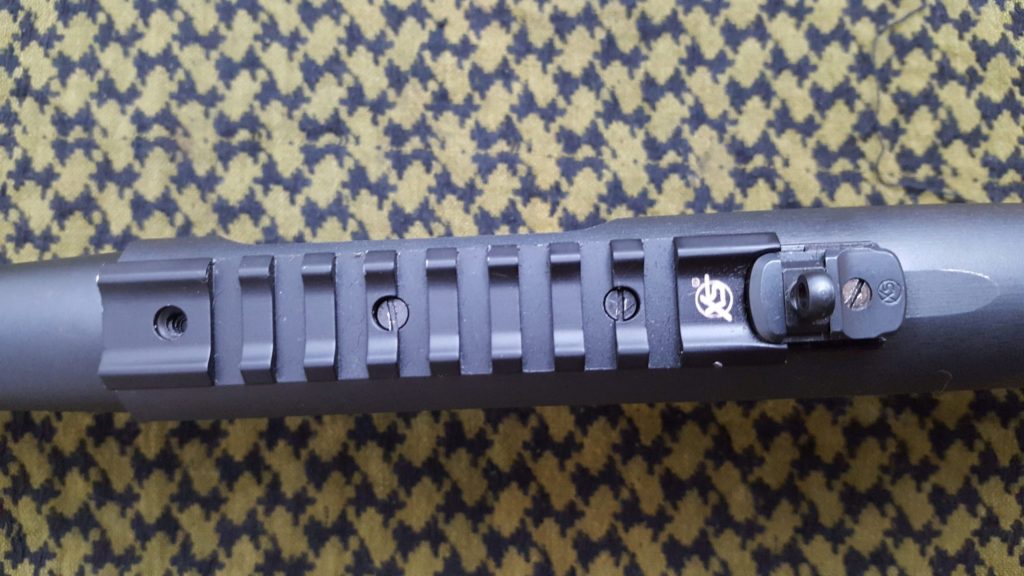
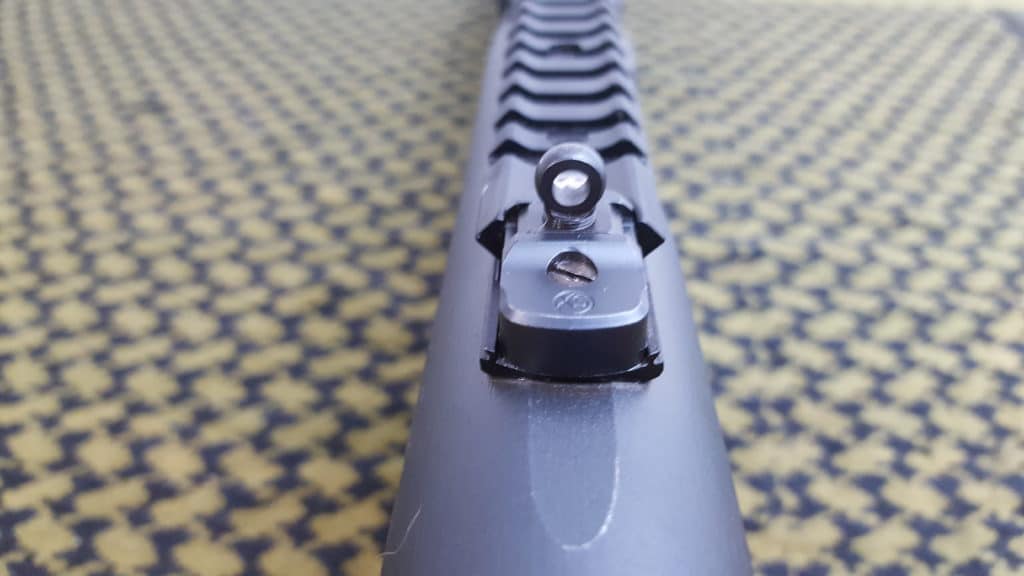
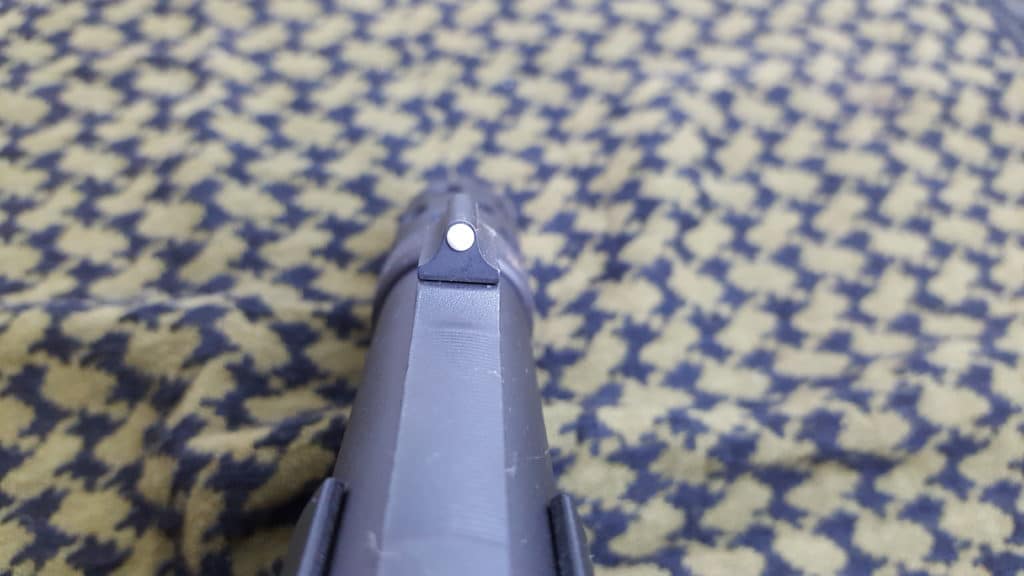
Controls: Safety, Loading Ammo and Pump Action
As the last feature I have as a standard on, the controls may very well be the make or break whether you label a shotgun combat worthy or not. The controls are not just limited to the safety, but rather it goes down to the way you load ammo and even the type of forearm you have on the pump action.
In this sense, they are the methods in which I control the gun with loading and firing. My standard is very simple. I merely have to be able to deactivate the safety without changing my grip, and I have to have the ability to load ammo without pulling the gun out of my shoulder. Some people get extreme and want the action release button to be accessible without changing the grip. I do not see that as necessary. I consider that to be about as important as being able to holster a pistol while maintaining a two handed firing grip.
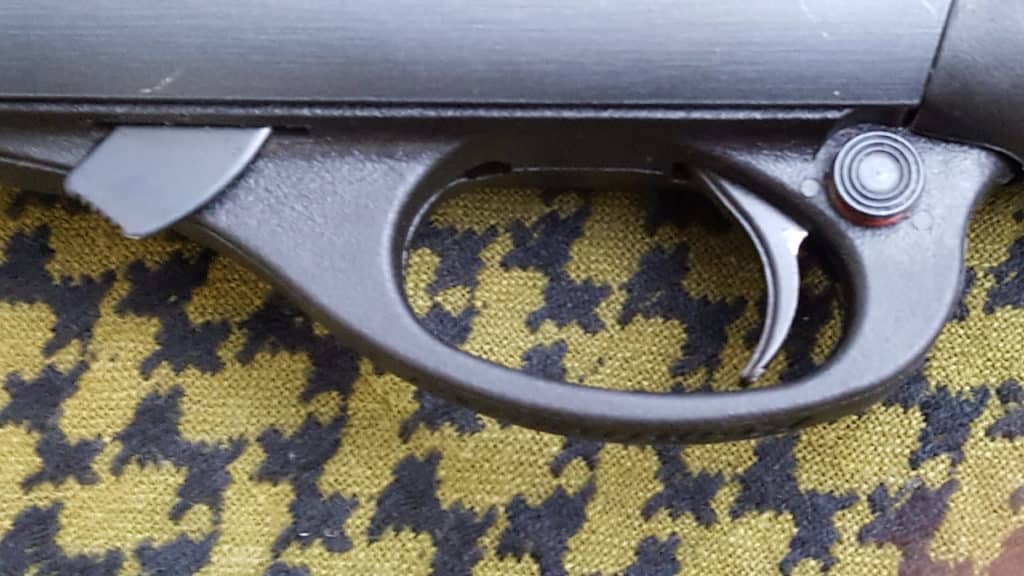
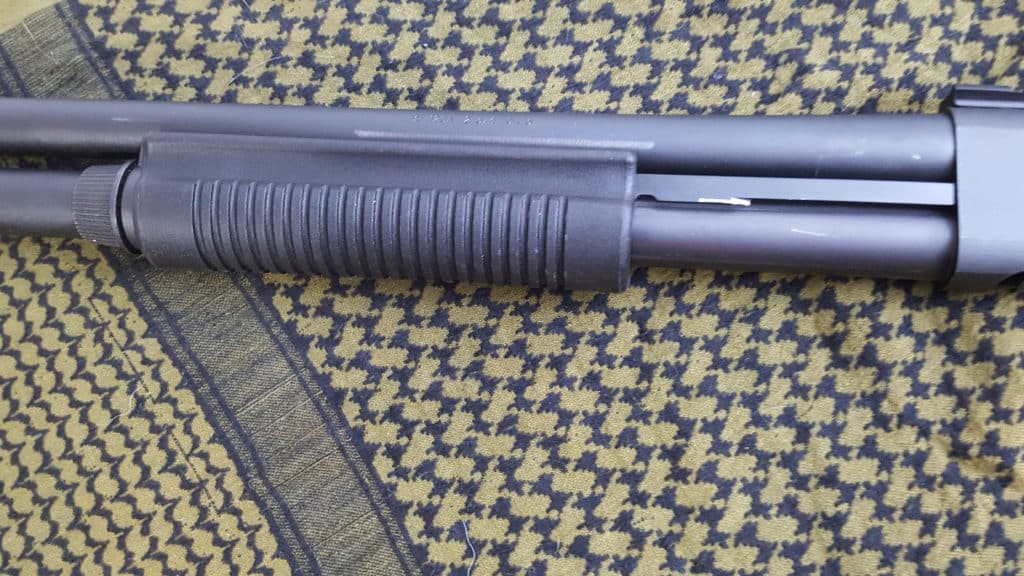
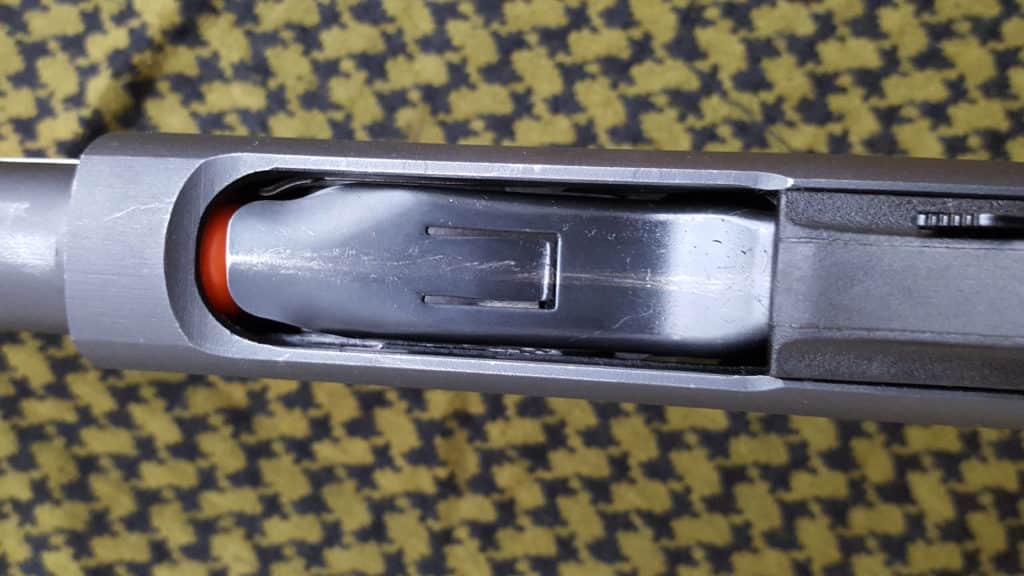
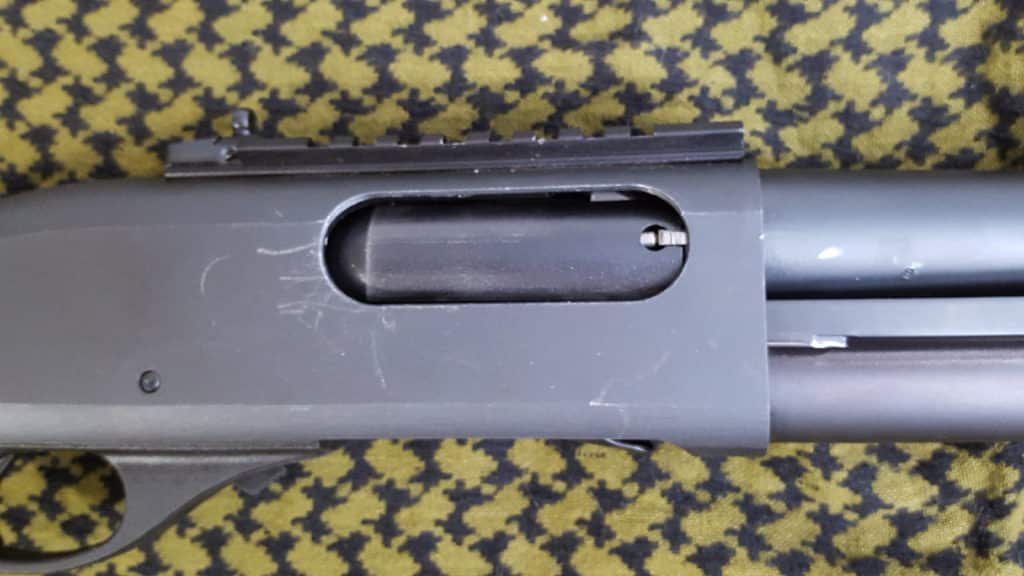
Shotgunning Conclustion
My process for defining a combat shotgun is from a range of personal experiences that is unique to me. I tend to be very rough with guns and gear because I don’t think about their feelings when I am using them. My gear and guns need to work without question and not need special ammo or excuses when they don’t run. I recommend establishing these parameters based on realistic contingencies, not static bench resting critique. Other than that, if you are serious about getting into shotgunning, I have found it to be a great performance enhancer and confidence booster once you get better with it. Going back to a .308 or 5.56 will be much easier in my experience. There is a lot to be said for expanding your training to include the combat shotgun.

